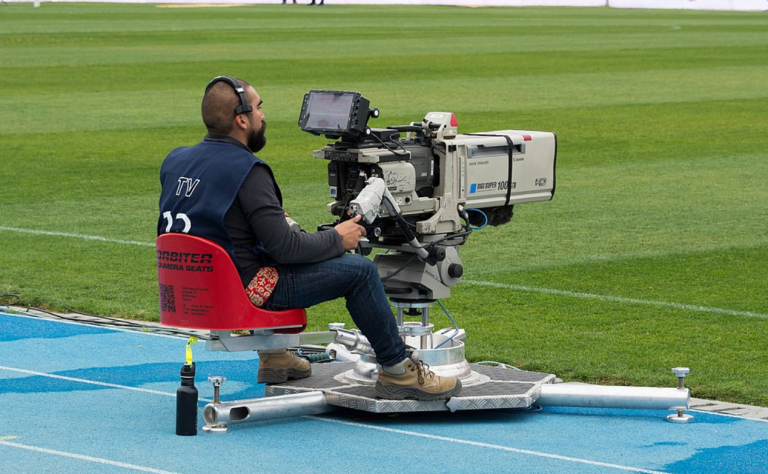Sports broadcasting has always been big business, but the digital revolution has completely rewritten the rules. What used to be dominated by cable giants is now driven by streaming platforms, social media networks, and direct-to-consumer models. Today, 스포츠 중계 (sports broadcasting) is not only about showing games — it’s about monetizing engagement, data, and fan loyalty in smarter, faster ways.
The Traditional Model: Broadcast Rights and Big Networks
For decades, the backbone of 스포츠 중계 was television licensing. Major networks competed fiercely for broadcasting rights, paying billions to secure exclusive deals with leagues like the NFL, Premier League, and NBA.
These rights were the lifeblood of the sports industry — ensuring massive exposure for leagues and stable revenue for broadcasters through advertising and subscriptions.
But this model had limits. Fans had to pay for expensive cable packages, and smaller sports struggled to gain airtime. The arrival of streaming platforms shattered those barriers.
The Streaming Revolution
Streaming transformed how audiences consume sports. Fans now want instant access, flexible pricing, and on-demand replays — something traditional TV couldn’t provide.
Modern 스포츠 중계 platforms like YouTube TV, DAZN, and ESPN+ built their success on three pillars:
- Accessibility: Watch from any device, anytime.
- Affordability: Lower prices than cable subscriptions.
- Global Reach: Broadcasts are no longer limited by geography.
This flexibility allowed even niche sports — from MMA to esports — to find massive audiences online, fueling the democratization of sports media.
Advertising and Data: The New Currency of Broadcasting
In the digital age, data is king. Streaming services track everything — view times, engagement, device usage, and audience demographics.
For 스포츠 중계 providers, this data turns into gold:
- Targeted advertising reaches specific demographics in real time.
- Dynamic ad placement changes based on viewer behavior.
- Fan insights help leagues build personalized experiences and merchandise campaigns.
Advertisers are now willing to pay more for targeted digital impressions than traditional TV spots, because every view is measurable and attributable.
The Rise of Subscription and Hybrid Models
Instead of relying solely on ads, most sports streaming services use subscription-based models. Monthly passes, pay-per-view events, and loyalty memberships offer predictable revenue streams.
However, many broadcasters now use hybrid systems — free access for casual viewers with premium tiers for exclusive content. For instance:
- Free highlights and recaps attract new fans.
- Premium tiers include live 스포츠 중계, behind-the-scenes access, and commentary in multiple languages.
This layered approach keeps fans engaged at every level while maximizing revenue.
How Social Media Monetizes Sports Content
Social networks have also become major players in broadcasting. Platforms like Facebook, TikTok, and X (formerly Twitter) buy short-term rights to stream clips and highlights, leveraging engagement rather than full games.
These “micro-broadcasts” offer instant gratification and viral potential — fans might not watch an entire match, but they’ll definitely replay a 10-second goal clip dozens of times.
스포츠 중계 has become a constant feedback loop: broadcast → clip → share → discuss → broadcast again.
Smaller Leagues, Bigger Opportunities
The streaming era has given smaller sports unprecedented exposure. Regional and amateur leagues can now broadcast through affordable online platforms without needing a massive production team.
For these organizations, 스포츠 중계 isn’t just about entertainment — it’s survival. By building loyal online communities, they attract sponsorships, local partnerships, and global recognition that were once out of reach.
Challenges of the New Market
While digital sports broadcasting offers endless potential, it also comes with challenges:
- Piracy: Illegal streams continue to hurt legitimate broadcasters.
- Fragmentation: Too many streaming platforms lead to “subscription fatigue.”
- Infrastructure: In regions with slow internet, streaming quality remains inconsistent.
To maintain trust, 스포츠 중계 providers must invest in secure delivery, fair pricing, and regional partnerships to ensure smooth, legal access.
The Future of Sports Broadcasting Business
The next evolution of sports broadcasting will revolve around AI, blockchain, and immersive technology.
- AI will optimize ad placement and automate highlight generation.
- Blockchain may handle ticketing, rights management, and fan rewards transparently.
- Virtual Reality (VR) will let fans “sit” in stadiums from home — a game changer for global events.
As fan attention becomes the most valuable commodity, broadcasters will continue blending entertainment, analytics, and interactivity into a seamless ecosystem.
Final Thoughts
Sports broadcasting has always been about connection — but today, it’s also about innovation. Streaming has made 스포츠 중계 more inclusive, more profitable, and more global than ever.
What began as a way to share live games has evolved into an entire digital economy built on fan passion. The future belongs to platforms that understand one simple truth: in sports, the real value isn’t just the broadcast — it’s the bond between fans and the moments they love.

